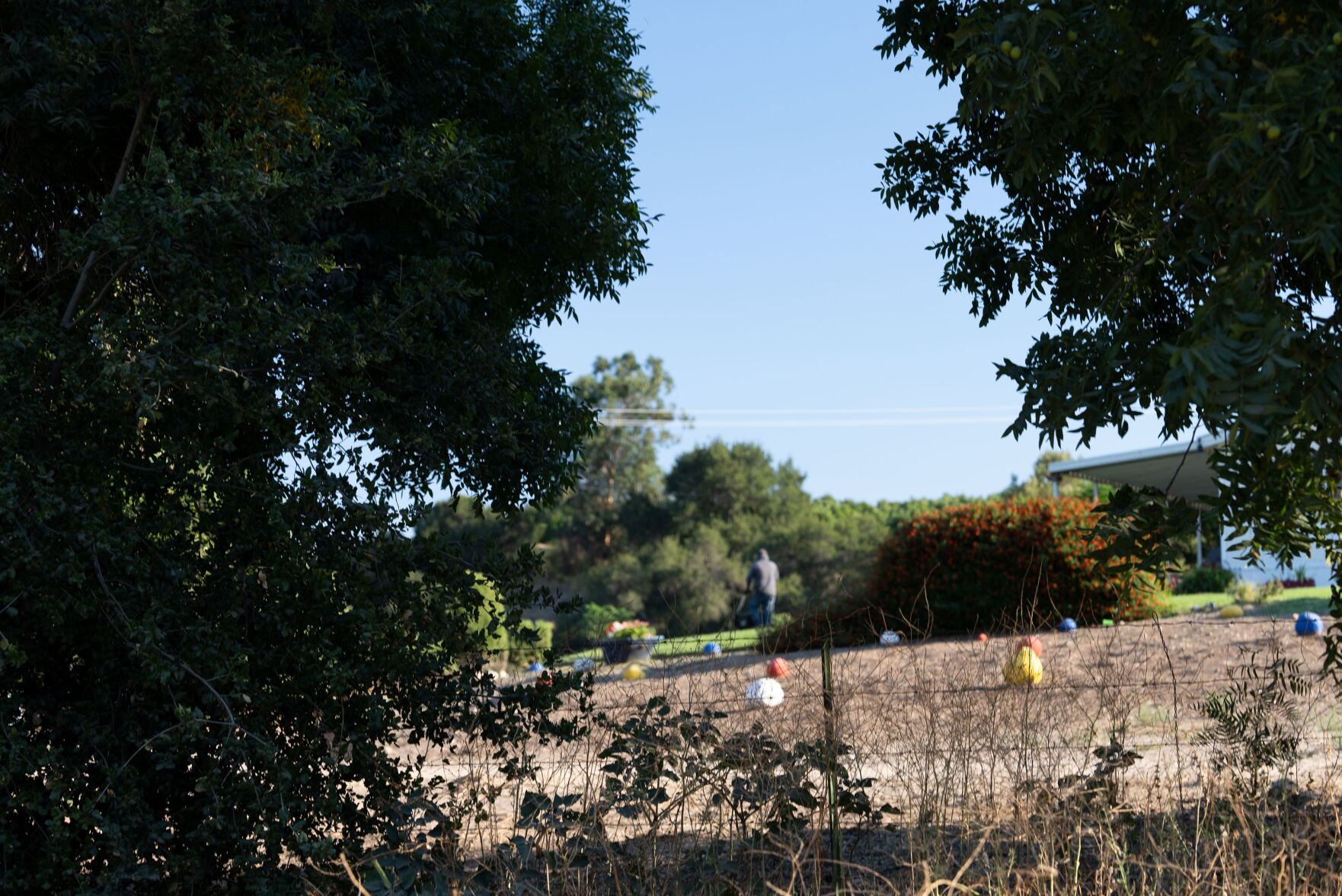
As the Canyon Fire burned and evacuation orders emptied the surrounding area, a day laborer pushed a mower across the lawn of a home. (Photo by Susana Canales Barrón)
With evacuation orders lifted for the Canyon Fire, a blaze that tore across the Los Angeles and Ventura County line, the full extent of the destruction is still unclear as officials continue to assess the damage. What is certain is that California wildfires continue to bring lasting health and economic challenges to farmworkers and day laborers.
“The air was thick with smoke until around noon,” Antonio told CALÓ News in Spanish, standing between the rows of an orange grove in Fillmore, roughly 15 miles northwest from the fire’s edge. He asked that his last name be withheld for fear of retaliation. "These orange trees were covered in ash earlier this year from a fire in January," Antonio added, referring to the Hughes Fire. "Now they are covered in ash again during this fire."
While the effects of wildfire smoke on wine grapes are well-documented, the potential impact on citrus crops is less certain. As of Sunday evening, CAL FIRE reported seven structures destroyed, meaning the ash settling on the oranges and leaves likely contains residue from burned industrial materials—smoke linked to higher risks of cardiovascular disease, systemic inflammation and respiratory illness, among other long-term life-threatening illnesses.
In California, where climate change has turned fire season into a near year-round threat, the dangers of inhaling toxic smoke or handling ash-contaminated crops have heightened concerns among farmworkers, day laborers and public health advocates.
"We distributed 3,000 masks to farmworkers in Ventura County after we learned about the Canyon Fire," Eulalia Mendoza, a longtime community organizer with the Mixteco Indigenous Community Organizing Project (MICOP), told CALÓ News in Spanish.
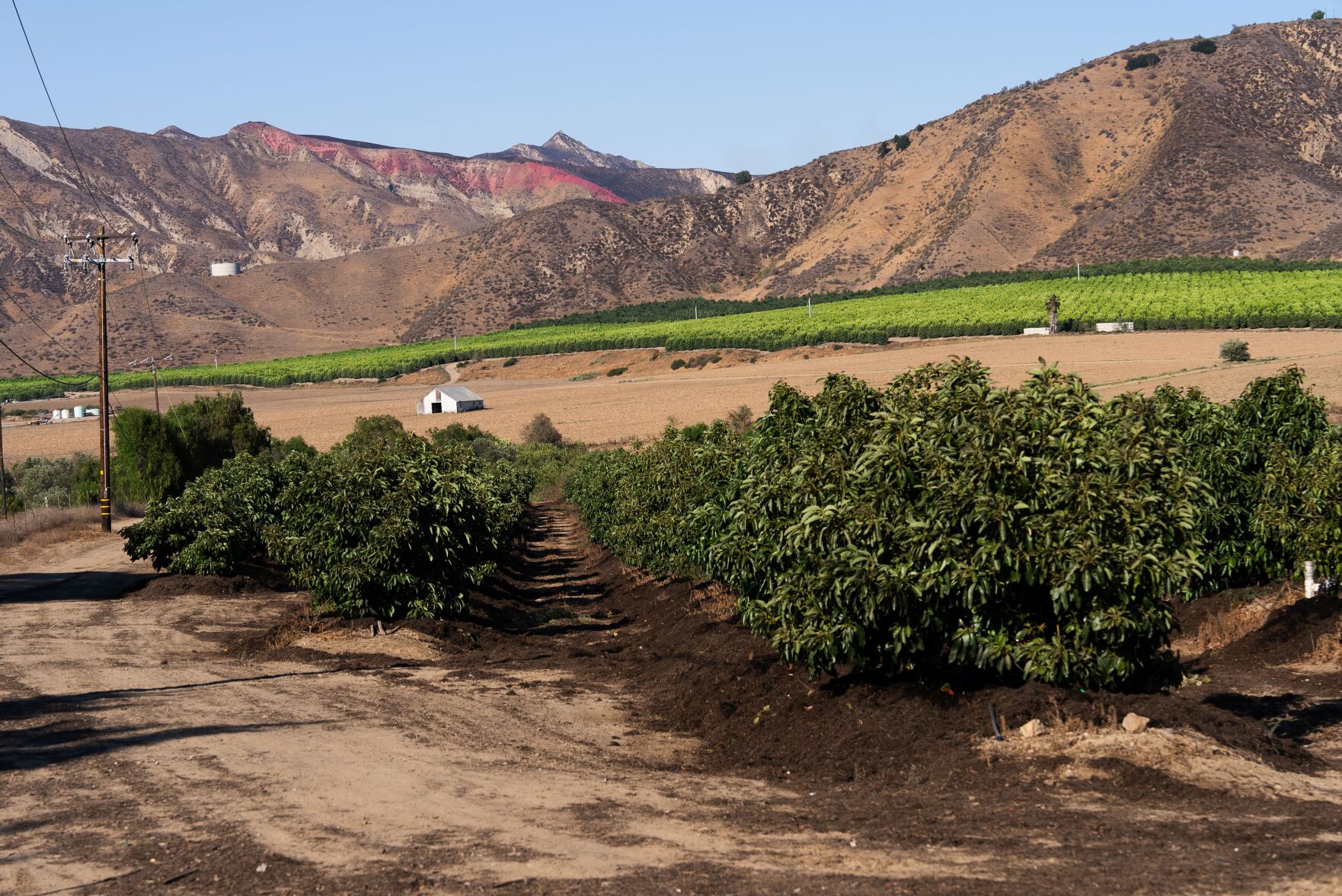
Burn scars and red fire retardant are seen in the distance from Piru Canyon Road. (Photo by Susana Canales Barrón)
When properly fitted, an N95 mask can block 95 percent of harmful particles linked to serious health problems. During wildfires, when smoke drives air quality into hazardous levels, health experts recommend discarding masks after a single use, making rapid, large-scale distribution efforts, like those MICOP has carried out during the Canyon Fire and previous fires, essential for protecting outdoor workers.
Another line of defense for outdoor workers comes through an audio alert system that delivers wildfire updates in Indigenous languages, including Mixteco and Zapoteco. Employers, supervisors and farmworkers in Ventura County can enroll by texting SMOKE for English or HUMO for Spanish/Mixteco/Zapoteco to 855-522-0034.
Subscribers receive real-time air quality updates when the Air Quality Index (AQI) reaches 151—triggering Cal/OSHA rules that require employers to offer N95 masks for voluntary use—and again when it exceeds 500, when masks become mandatory for all outdoor workers.
The audio alert system was launched in 2022, born out of the devastation of the 2017 Thomas Fire, which killed 23 people—both directly and indirectly—and destroyed more than 1,000 structures. It was the product of coordinated efforts by the Ventura County Air Pollution Control District, Central Coast Alliance United for a Sustainable Economy (CAUSE), MIPOC, Líderes Campesinas, and the Public Health Institute's Achieving Resilient Communities (ARC) project.
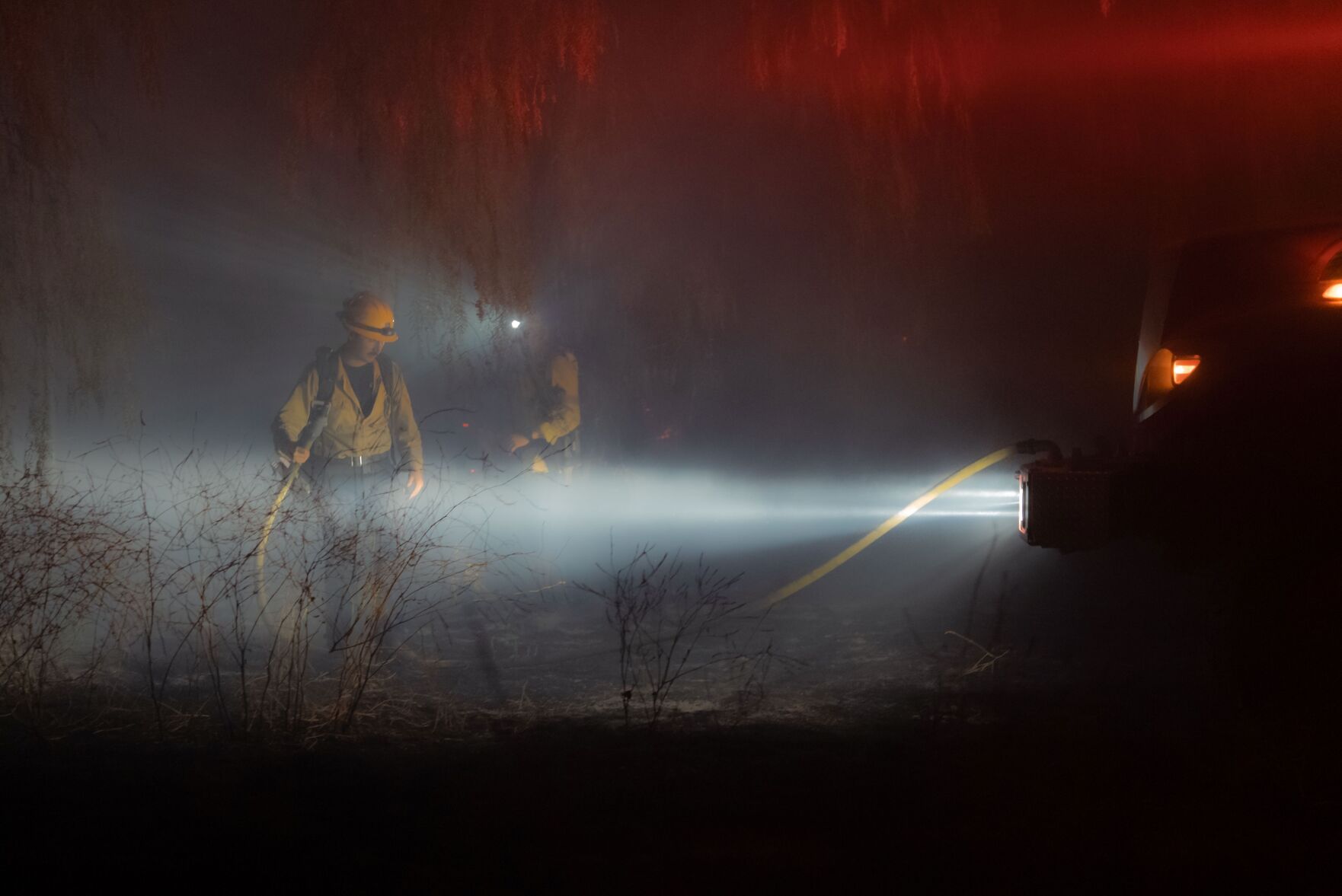
Firefighters worked to contain the Canyon Fire by building a perimeter. (Photo by Susana Canales Barrón)
"During the planning of the audio alerts, we pushed to include Purépecha and Otomí, but were told there wasn't enough capacity," Mendoza said while leafing through planning committee documents. "I hope we can add these Indigenous languages in the future."
Despite such efforts, recent events, including the recent Canyon Fire and the Los Angeles Fires at the start of the year, have underscored a broader, systemic reality. Many of the workers who maintain California's residential and commercial buildings, landscapes and agricultural fields remain dangerously exposed during climate-driven disasters.
Near Lake Piru, during the Canyon Fire, with an active evacuation order in place and roads otherwise empty, a day laborer was still mowing the lawn of a home. Research and on-the-ground reporting have documented numerous factors that push workers to stay on job sites during emergencies, even in evacuation zones. Among them are:
Loss of income – Many day laborers are paid only for hours worked.
Job insecurity – Fear of being replaced for missing a shift.
Employer pressure – Supervisors insisting work continue.
Misinformation – Downplaying the severity of the danger.
Lack of awareness – Not knowing an evacuation order is in effect.
Limited access to alerts – No cell service or smartphones.
Immigration status – Fear of authorities prevents seeking help.
Lack of transportation – No safe or reliable way to leave.
Limited understanding of fire behavior – Not recognizing how quickly conditions change.
Employer-provided housing or tools onsite – Fear of losing housing or possessions.
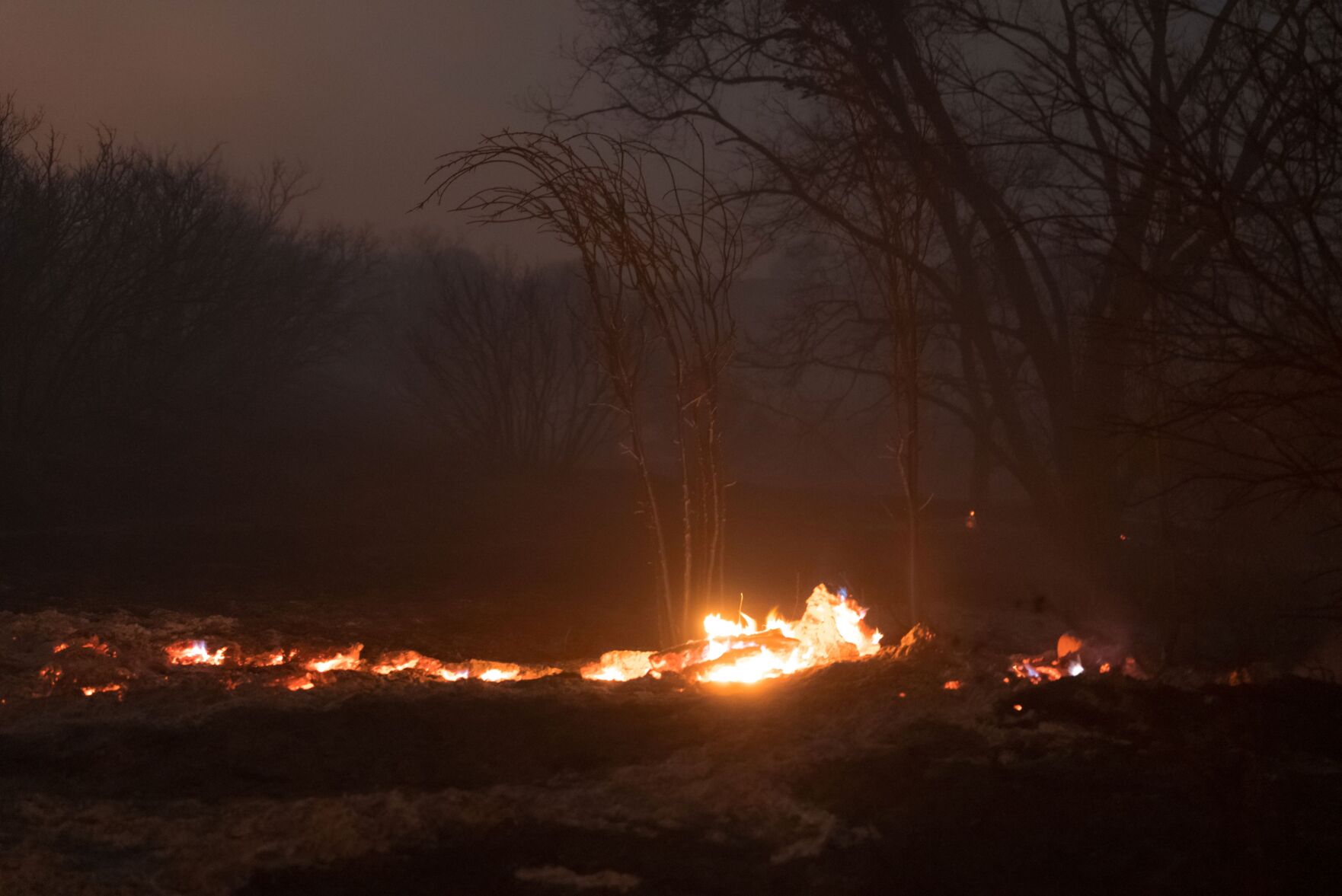
Fire burns vegetation alongside residential roads in Hasley Canyon. (Photo by Susana Canales Barrón)
"I've worked through two fires so far," Antonio said, scrolling through photos on his phone that showed smoke-filled skies over his work sites. When asked why he stayed on the job site despite hazardous air, he gazed into the distance and mentioned he was used to working in dangerous conditions.
The Canyon Fire offers a glimpse at critical shortcomings that remain in wildfire preparedness if another wildfire on the scale of the Thomas Fire or the Los Angeles Fires were to ignite in Ventura County. In a state where wildfire season has become a year-round reality, the question is no longer whether another disaster will strike, but whether California will be prepared to withstand it.


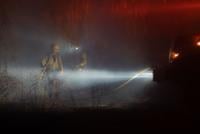
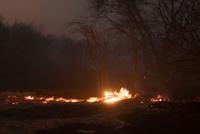




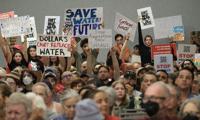




(0) comments
Welcome to the discussion.
Log In
Keep it Clean. Please avoid obscene, vulgar, lewd, racist or sexually-oriented language.
PLEASE TURN OFF YOUR CAPS LOCK.
Don't Threaten. Threats of harming another person will not be tolerated.
Be Truthful. Don't knowingly lie about anyone or anything.
Be Nice. No racism, sexism or any sort of -ism that is degrading to another person.
Be Proactive. Use the 'Report' link on each comment to let us know of abusive posts.
Share with Us. We'd love to hear eyewitness accounts, the history behind an article.